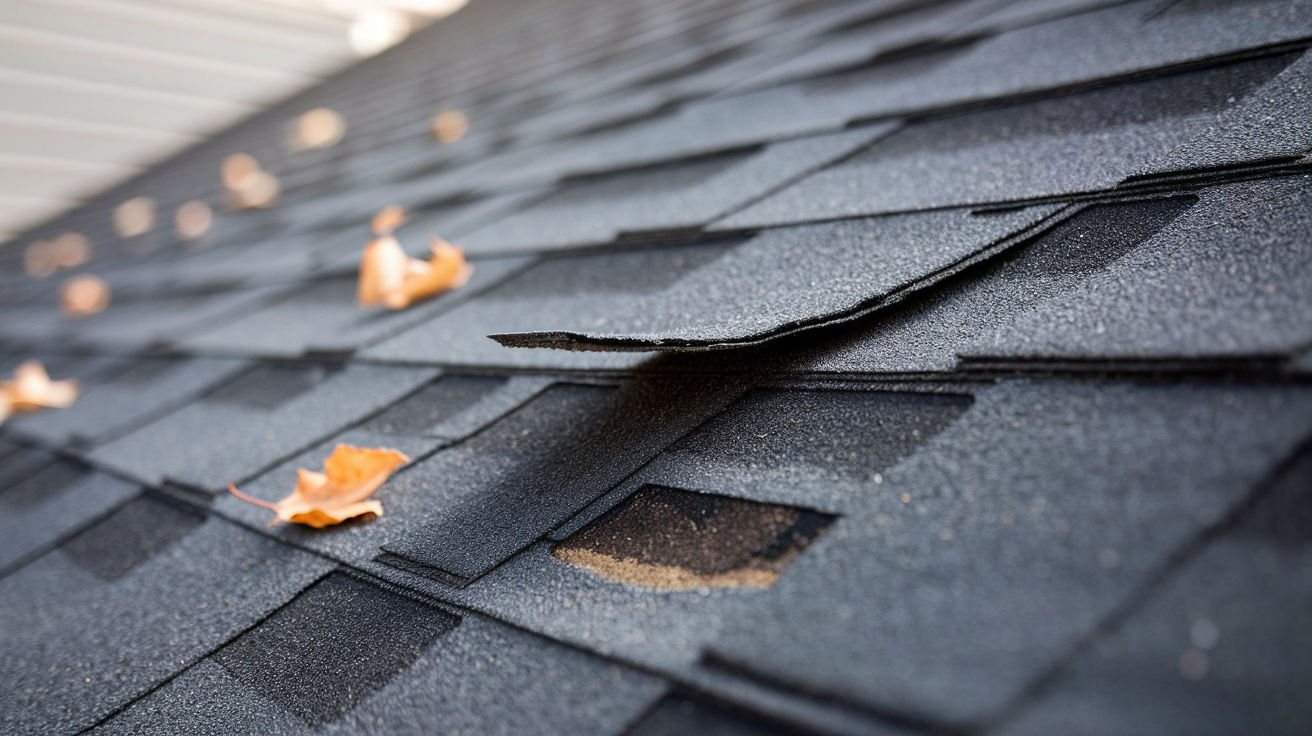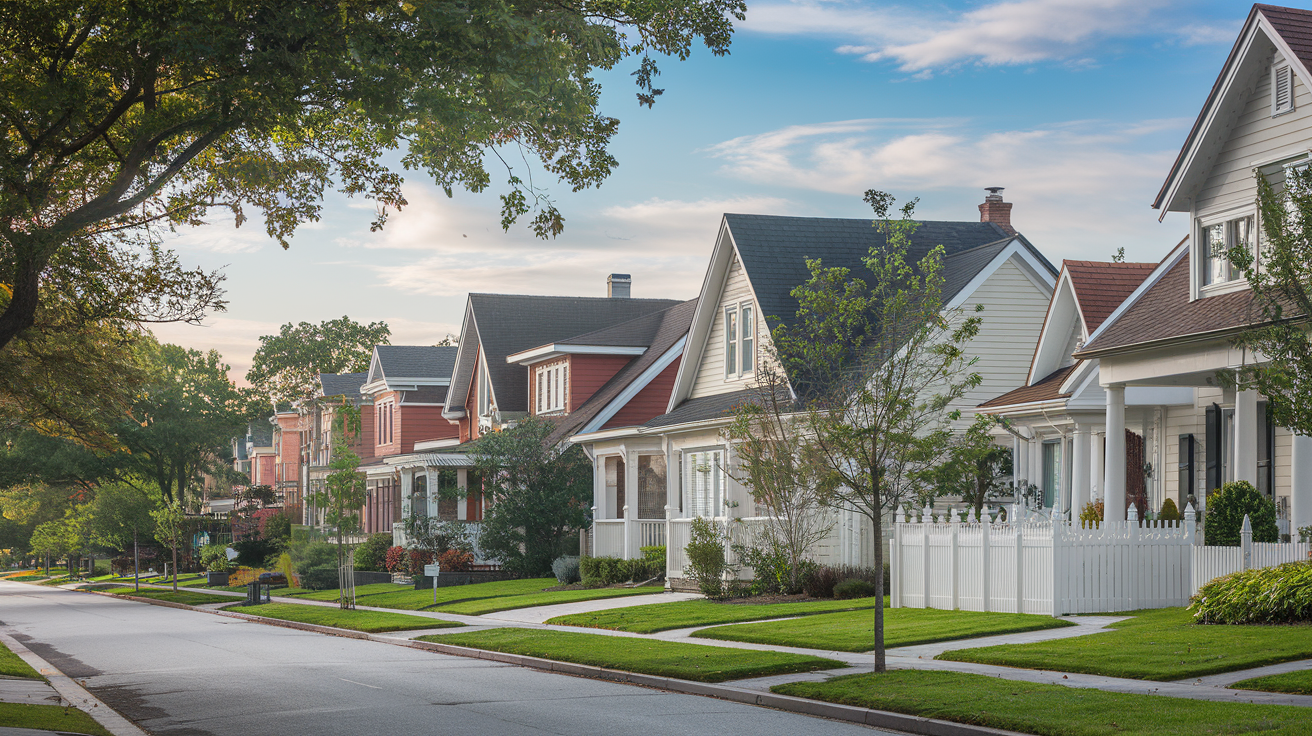Expert Guide: How Roof Color Affects Your Home's Energy Bills
Did you know your roof color could be silently inflating your energy bills by up to 60%? As energy costs continue to rise, homeowners are discovering that their choice of roof color plays a crucial role in their home's energy efficiency. The impact of roof color on home energy efficiency has become a critical consideration for both new construction and renovation projects.
Recent studies show that switching to an energy-efficient roof color can reduce cooling costs by 10-60% in warm climates (Source: field experiments in Florida). This significant saving potential has caught the attention of homeowners nationwide, especially as average household energy costs continue to climb. Whether you're planning a roof replacement or simply want to understand your home's energy performance better, the color of your roof matters more than you might think.
In this comprehensive guide, you'll discover how roof color affects your home's temperature, learn about optimal color choices for different climates, and understand the potential savings on your energy bills. We'll explore scientific evidence, practical solutions, and real-world examples to help you make an informed decision about your roof's color.
- Understanding Roof Color and Energy Efficiency
- Regional Considerations for Roof Color Selection
- Solutions and Maintenance for Optimal Performance
- Cost Implications of Roof Color Choices
- Making Informed Decisions
Understanding Roof Color and Energy Efficiency
Choosing the right roof color can significantly influence your home's energy efficiency. Roof color impacts how much sunlight your home absorbs or reflects, directly affecting indoor temperature and energy consumption. A darker roof absorbs more heat, leading to a warmer interior, whereas a lighter roof reflects more heat, resulting in a cooler interior. Understanding this principle empowers homeowners to make informed decisions, optimizing energy efficiency and potentially lowering utility bills. Want to assess your current roof's efficiency? Get Your Roof Assessment.

The Science Behind Reflectivity and Absorption
Roof color plays a vital role in how much sunlight a building reflects or absorbs. Lighter roofs, like white or pastel shades, reflect more sunlight, with reflectivity ranging from 65% to over 80%, depending on the material and finish. A highly reflective roof could bounce back up to 80% of the sun's energy, minimizing heat transfer into the house. Darker roofs absorb more heat, typically reflecting only 5% to 15% of sunlight, potentially absorbing 85-95% of the sun's energy. Understanding these properties helps homeowners choose a roof aligned with their climate and energy goals. To learn more about roof maintenance and how it relates to energy efficiency, visit our comprehensive guide.
Reflectivity's Impact
In hotter climates, a highly reflective roof keeps your home cooler. In colder climates, a darker, more absorptive roof might be preferable. This allows the home to absorb more sunlight during colder months, potentially reducing heating costs.

Impact on Home Temperature and Energy Bills
Your roof's color directly affects your home's internal temperature and energy bills. In warm climates, a reflective roof can reduce cooling loads by 10% to 60%, especially in homes with less insulation. This reduced cooling demand translates to lower energy bills, potentially saving up to 15% on cooling costs. These savings can be substantial, especially during peak summer months.
Benefits in Cooler Climates
Conversely, darker roofs can benefit homes in cooler climates by absorbing sunlight and reducing heating needs. A darker roof can passively heat your home, reducing reliance on your heating system and potentially lowering heating bills. Choosing the right roof color offers significant energy savings while maintaining indoor comfort.
Regional Considerations for Roof Color Selection
Choosing the right roof color is key for energy efficiency. This choice depends heavily on where you live, including local weather, temperature changes, and building codes. This section explores these regional factors, helping homeowners make smart choices.
Specific Challenges in the Pacific Northwest
The Pacific Northwest, known for its wet and cloudy weather, presents unique challenges. Dark roofs can be helpful in this region as they absorb more heat, keeping homes warmer in the colder months. However, frequent rain and cloudy skies limit how much roof color alone can improve energy efficiency. Homeowners should also consider moss and algae growth, common in the area, which can affect the longevity and appearance of a darker roof. Choosing a roof color with protective coatings can help address these issues. Consider roofing materials that resist moss and algae, like metal roofs or tiles with special coatings.
Roof Color Impact in Hot and Humid Climates
In hot and humid climates, roof color significantly impacts energy efficiency. Light-colored roofs, also known as cool roofs, reflect much of the sun's rays, reducing cooling needs in buildings by 10-60%, especially in buildings with uninsulated roof systems. In these regions, homeowners should choose lighter roof colors to manage intense heat and humidity, making homes more comfortable and less reliant on air conditioning. Thinking about a new roof? Get Your Roof Assessment to see how a cool roof could benefit you.
Addressing Local Building Codes and Preferences
Local building codes and community preferences also affect roof color choices. Many neighborhoods have rules about acceptable roofing materials, colors, and styles to maintain a consistent look. Homeowners must follow these rules to avoid problems or fines. Some areas offer incentives for energy-efficient upgrades like cool roofs, which can include tax credits, rebates, or grants. Before choosing a roof color, contact your local building department or homeowner's association to understand requirements and incentives.
Solutions and Maintenance for Optimal Performance
Maintaining a roof's peak performance involves more than just its color. This section explores practical solutions and upkeep tips to ensure your roof contributes to energy savings and lasts as long as possible.
Preventing Moss and Algae Growth on Light Roofs
Light-colored roofs excel at reflecting sunlight, reducing heat gain, and lowering cooling costs, especially in warmer climates. However, they can be susceptible to moss and algae growth, particularly in humid environments. To prevent this, install zinc or copper strips near the roof ridge. Trimming overhanging branches reduces shade and moisture, further discouraging growth. Annual inspections and cleaning with a mild bleach solution (with proper safety precautions) maintain reflectivity and appearance. For a professional assessment of your roof's condition, consider our Get Your Roof Assessment.
Managing Heat Absorption in Dark Roofs
Dark roofs can be beneficial in colder climates due to their heat absorption. However, they can increase cooling costs in warmer months. Reflective coatings can significantly improve a roof's solar reflectance. Proper attic ventilation also helps dissipate heat, reducing strain on cooling systems and energy bills. To learn more about roof maintenance, visit our comprehensive guide.
- Biannual inspections to identify damage or wear.
- Use non-abrasive methods like low-pressure wash for cleaning.
- Maintain high reflectivity on light-colored roofs by removing dirt and debris.
- Check for fading or damage on dark roofs.
- Keep gutters and downspouts clear to prevent water buildup.
Recommended Cleaning and Maintenance Practices
Regular maintenance is essential for any roof color to ensure its lifespan and performance.
- Biannual inspections can identify damage or wear early. Look for missing or damaged shingles, leaks, and debris buildup.
- Clean your roof carefully using non-abrasive methods like a low-pressure wash or soft-bristled brush to avoid damage.
- Maintain high reflectivity on light-colored roofs by regularly removing dirt and debris.
- For dark roofs, check for fading or damage to ensure continued energy efficiency.
- Keep gutters and downspouts clear to prevent water buildup, which can cause mold and structural problems.
By following these maintenance practices, homeowners can optimize their roof's performance, maximizing energy efficiency and lifespan.
Cost Implications of Roof Color Choices
Choosing the right roof color goes beyond aesthetics; it significantly impacts your home's energy efficiency and long-term expenses. Understanding these cost factors empowers homeowners to make informed decisions that save money both upfront and over time through reduced energy bills.
Initial Installation Costs and Material Comparisons
Roof installation costs depend heavily on the chosen material and its color. Dark-colored roofs, like those made with black asphalt shingles, are typically more affordable upfront. However, these materials absorb more heat, potentially increasing cooling costs. Conversely, light-colored roofs, including white or reflective coatings, often have higher initial costs due to the specialized materials used to enhance reflectivity. Despite the higher upfront investment, reflective roofs may qualify for tax credits, significantly offsetting the initial cost.
Potential Energy Savings Over Time
Roof color significantly impacts energy savings, especially in warmer climates. Light-colored and reflective roofs can reduce cooling energy consumption by up to 15%, translating to a potential 7-15% reduction in total cooling costs. These energy savings not only lower utility bills but also reduce a home's carbon footprint. Over time, these energy savings contribute to substantial financial savings, making it a cost-effective choice.
| Roof Type | Initial Cost | Energy Savings | Maintenance Needs |
|---|---|---|---|
| Dark Roof | Lower | Potentially Higher Cooling Costs | More Frequent |
| Light Roof | Higher | Up to 15% Energy Savings | Less Frequent |
Long-Term Maintenance and Repair Costs
Maintenance and repair costs are another key consideration. While initially cheaper, dark roofs may require more frequent repairs due to the thermal expansion and contraction caused by heat absorption. Light-colored roofs, particularly those with cool roof technology, typically require less maintenance. This increased durability translates to fewer repairs and a longer lifespan, offsetting the higher initial installation costs.
Making Informed Decisions
Choosing the right roof color and material is more than just an aesthetic decision. It significantly affects your home's energy efficiency, comfort, and even its lifespan. This section guides you through key considerations, from evaluating material durability to understanding real-world examples of how roof color impacts energy use.
Evaluating Roof Material Longevity and Durability
The lifespan of a roof depends on several factors, with material choice being key. Some materials, like S-tile roofs, can last for 30 years or more in specific climates. Regular maintenance is crucial. Cleaning gutters, removing debris, and ensuring proper ventilation prevent moisture buildup and extend roof life. Regular roof inspections are vital. For an AI-powered analysis of your roof's condition, explore our Get Your Roof Assessment.
Consulting with Roofing Experts
Roofing professionals offer valuable, location-specific advice. They assess the suitability of different materials and colors, balancing your aesthetic preferences with energy efficiency goals. Experts stay up-to-date on the latest technologies and sustainable materials, like cool roofs. Local building codes and regulations often dictate acceptable roofing materials, colors, and styles. A roofing expert can ensure your choices comply with these guidelines. To learn more about roof maintenance and maximize your roof's lifespan, explore our comprehensive guide.
Real-life Case Studies and Homeowner Experiences
Real-world examples demonstrate the tangible benefits of smart roofing choices. Studies in Florida, for instance, have analyzed how reflective roof coatings impact air conditioning energy use in occupied homes. Homeowner testimonials often highlight noticeable reductions in cooling costs with lighter-colored roofs. Darker roofs, conversely, absorb more heat, potentially increasing energy consumption and costs. Analyzing these real-life examples empowers you to make informed decisions aligned with your budget and lifestyle.
In conclusion, choosing the right roof involves carefully considering material durability, consulting experts, and learning from others' experiences. By taking these steps, you can improve your home's energy efficiency, lower your utility bills, and ensure your roof lasts for years to come.
Disclaimer: This blog post is intended for informational purposes only and should not be considered professional roofing advice. Always consult with qualified roofing contractors and insurance professionals for specific guidance regarding your individual circumstances.
